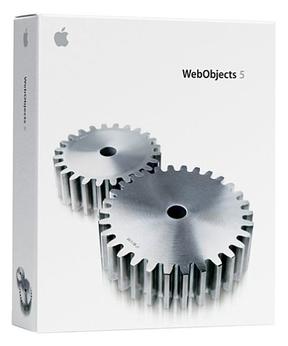An integrated development environment (IDE) is a software application that provides comprehensive facilities for software development. An IDE normally consists of at least a source-code editor, build automation tools, and a debugger. Some IDEs, such as IntelliJ IDEA, Eclipse and Lazarus contain the necessary compiler, interpreter or both; others, such as SharpDevelop and NetBeans, do not.

Eclipse is an integrated development environment (IDE) used in computer programming. It contains a base workspace and an extensible plug-in system for customizing the environment. It is the second-most-popular IDE for Java development, and, until 2016, was the most popular. Eclipse is written mostly in Java and its primary use is for developing Java applications, but it may also be used to develop applications in other programming languages via plug-ins, including Ada, ABAP, C, C++, C#, Clojure, COBOL, D, Erlang, Fortran, Groovy, Haskell, HLASM, JavaScript, Julia, Lasso, Lua, NATURAL, Perl, PHP, PL/I, Prolog, Python, R, Rexx, Ruby, Rust, Scala, and Scheme. It can also be used to develop documents with LaTeX and packages for the software Mathematica. Development environments include the Eclipse Java development tools (JDT) for Java and Scala, Eclipse CDT for C/C++, and Eclipse PDT for PHP, among others.

WebObjects is a discontinued Java web application server and a server-based web application framework originally developed by NeXT Software, Inc.

The System Object Model (SOM) is an object-oriented shared library technology developed by IBM that supports defining an interface to an object so that its interface is separate from its implementation.

jEdit is a free software text editor available under GPL-2.0-or-later. It is written in Java and runs on any operating system with Java support, including BSD, Linux, macOS and Windows.

XEDIT is a visual editor for VM/CMS using block mode IBM 3270 terminals.

A source-code editor is a text editor program designed specifically for editing source code of computer programs. It may be a standalone application or it may be built into an integrated development environment (IDE).

A class browser is a feature of an integrated development environment (IDE) that allows the programmer to browse, navigate, or visualize the structure of object-oriented programming code.
The Apple Developer Tools are a suite of software tools from Apple to aid in making software dynamic titles for the macOS and iOS platforms. The developer tools were formerly included on macOS install media, but are now exclusively distributed over the Internet. As of MacOS 14.6.1, Xcode is available as a free download from the Mac App Store.

In software development, CMake is cross-platform free and open-source software for build automation, testing, packaging and installation of software by using a compiler-independent method. CMake is not a build system itself; it generates another system's build files. It supports directory hierarchies and applications that depend on multiple libraries. It can invoke native build environments such as Make, Qt Creator, Ninja, Android Studio, Apple's Xcode, and Microsoft Visual Studio. It has minimal dependencies, requiring only a C++ compiler on its own build system.
E is the text editor which was made part of PC DOS with version 6.1 in June 1993, in February 1995 with version 7 and later with PC DOS 2000. In version 6.1, IBM dropped QBASIC, which, in its edit mode, was also the system text editor. It was necessary to provide some sort of editor, so IBM chose to adapt and substantially extend its OS/2 System Editor (1986), a minimally functional member of the E family of Editors. The DOS version is extended with a wide array of functions that are usually associated with more functional versions of the E editor family. In version 7, IBM added the REXX language to DOS, restoring programmability to the basic box. IBM also provided E with OS/2.
NetRexx is an open source, originally IBM's, variant of the REXX programming language to run on the Java virtual machine. It supports a classic REXX syntax, with no reserved keywords, along with considerable additions to support object-oriented programming in a manner compatible with Java's object model, yet can be used as both a compiled and an interpreted language, with an option of using only data types native to the JVM or the NetRexx runtime package. The latter offers the standard Rexx data type that combines string processing with unlimited precision decimal arithmetic.

JUCE is an open-source cross-platform C++ application framework, used for the development of desktop and mobile applications. JUCE is used in particular for its GUI and plug-ins libraries. It is dual licensed under the GPLv3 and a commercial license.

WebSphere sMash was a development and runtime environment from IBM for the creation of dynamic web applications using the scripting languages Apache Groovy and PHP. It contained a PHP runtime written in Java. Project Zero was the experimental software development community in which new versions of WebSphere sMash were incubated. WebSphere sMash was withdrawn from sale in 2012, with support discontinued in 2014.

LEXX is a text editor which was probably the first to use live parsing and colour syntax highlighting for marked-up text and programs. It was written by Mike Cowlishaw of IBM in 1985. The name was chosen because he wrote it as a tool for lexicographers, during an assignment for Oxford University Press's 'New Oxford English Dictionary'. The program ran on mainframes under VM/CMS. LEXX's design was based on several other editors written by the same author augmented by the ability to dynamically parse text and display colour on the new colour terminals that had recently become available. It is programmable using dynamically-loaded compiled commands or using interpreted commands.

In computing, a script is a relatively short and simple set of instructions that typically automate an otherwise manual process. The act of writing a script is called scripting. Scripting language or script language describes a programming language that is used for scripting.











